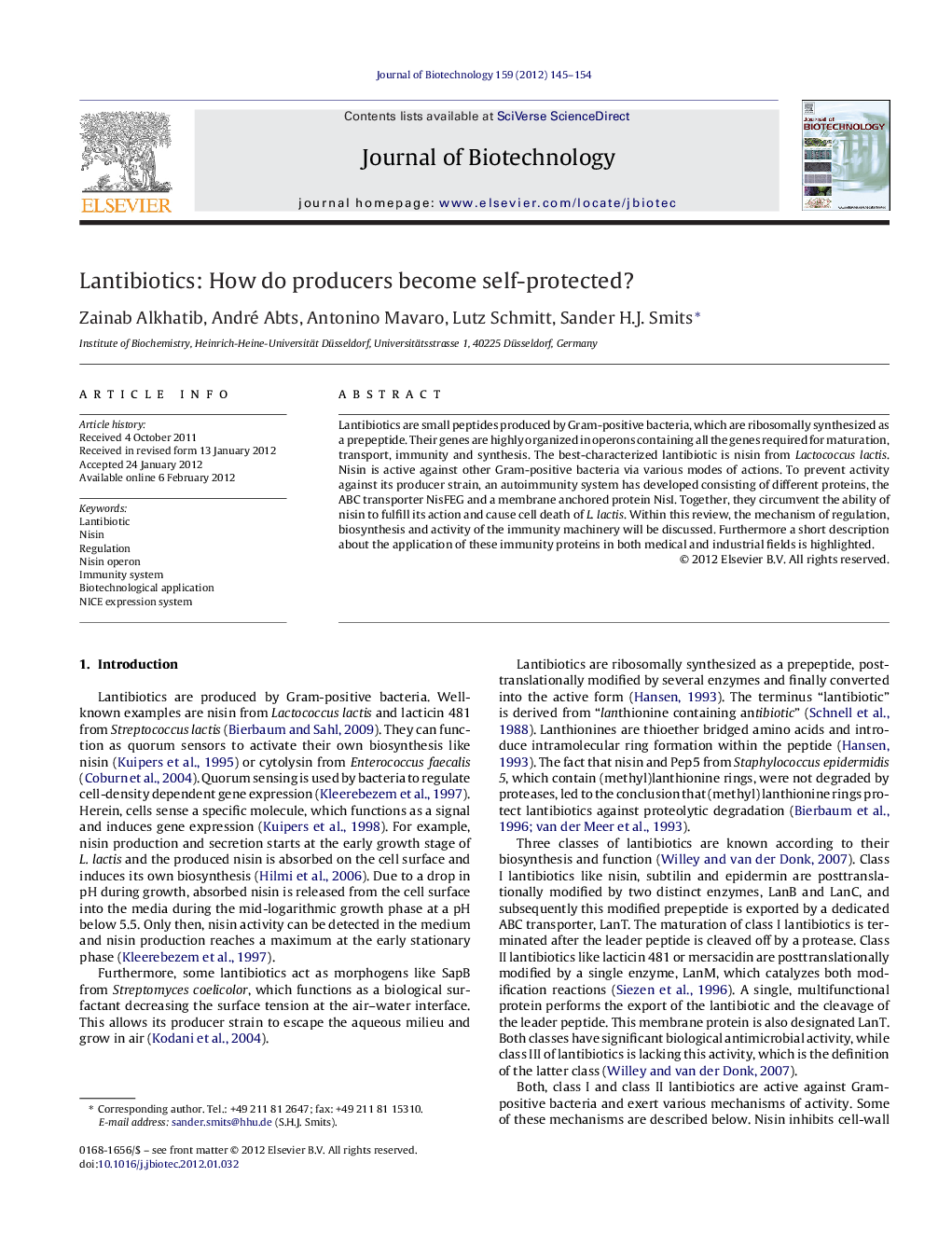| Article ID | Journal | Published Year | Pages | File Type |
|---|---|---|---|---|
| 23775 | Journal of Biotechnology | 2012 | 10 Pages |
Lantibiotics are small peptides produced by Gram-positive bacteria, which are ribosomally synthesized as a prepeptide. Their genes are highly organized in operons containing all the genes required for maturation, transport, immunity and synthesis. The best-characterized lantibiotic is nisin from Lactococcus lactis. Nisin is active against other Gram-positive bacteria via various modes of actions. To prevent activity against its producer strain, an autoimmunity system has developed consisting of different proteins, the ABC transporter NisFEG and a membrane anchored protein NisI. Together, they circumvent the ability of nisin to fulfill its action and cause cell death of L. lactis. Within this review, the mechanism of regulation, biosynthesis and activity of the immunity machinery will be discussed. Furthermore a short description about the application of these immunity proteins in both medical and industrial fields is highlighted.
► Lantibiotics are produced by Gram-positive bacteria. ► The producer strains have developed an immunity system consisting of LanFEG and or LanI. ► The paradigm for lantibiotic biosynthesis, expression as well as immunity is nisin from L. lactis. ► The immunity genes LanFEG and LanI of L. lactis act against its own produced nisin, which is the focus of this review.
